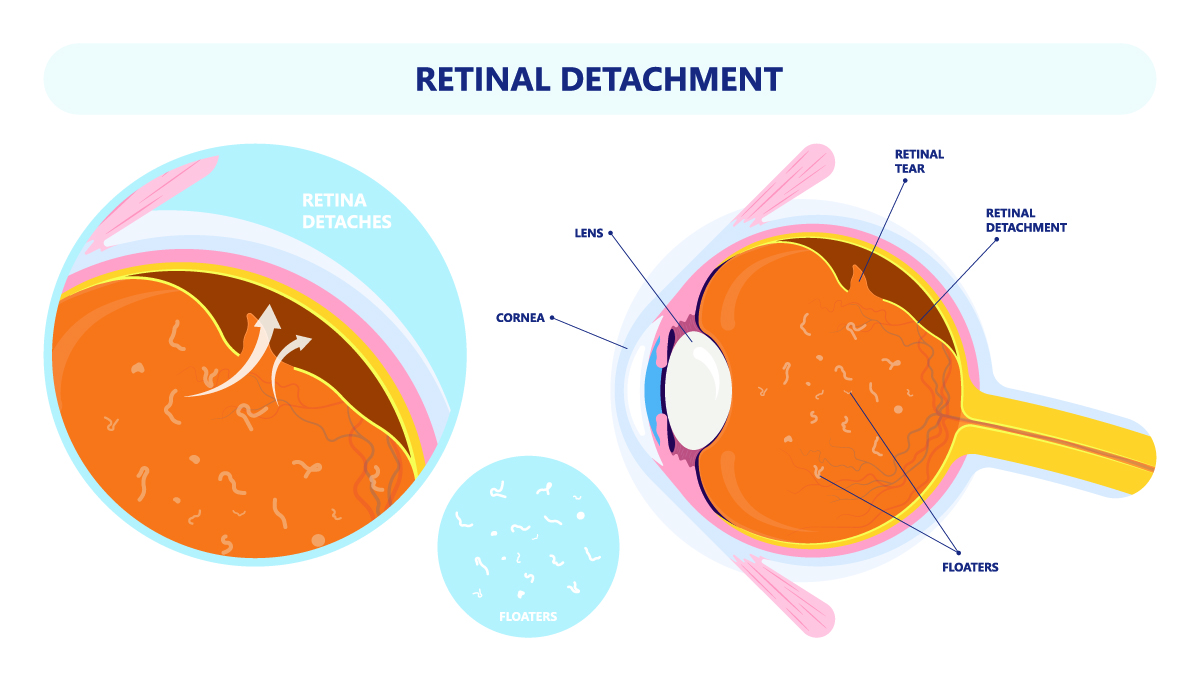Are You High Risk for Retinal Detachment?
Submitted by Elman Retina Group on January 5, 2024

Retinal detachment is a serious eye concern that occurs when the light-sensitive tissue in the back of your eye pulls away from the eyeball, causing a hole or tear. A retinal specialist must repair the tissue quickly to restore vision and eye health, and some people are more at risk than others for retinal detachment. Our eye doctors at Elman Retina Group explain the risk factors for retinal detachment and retinal tears below.
You may have a retinal tear or detachment if you experience a sudden increase in floaters or see light flashes. Blurry vision that develops quickly or seeing a shadow or curtain over your vision are other warning signs that you need eye care immediately.
1. Aging
People who are over 50 years old are more likely to experience retinal detachment. That’s because the vitreous gel filling the inside of your eye shrinks with age and pulls on the retina, causing a tear or break.
2. History of Retinal Detachment
If you have had retinal detachment in one eye, there is an estimated 10% chance you will develop a second retinal tear or separation in the other eye. People with connective tissue disorders are more likely to have bilateral (both eyes) retinal detachment. Our eye doctors will monitor your health and discuss preventative treatment if you have this risk factor.
Some research shows a family history of retinal detachment makes you more likely to have the issue. Discuss your family’s eye health to understand your risk for eye disease and injury.
3. Extreme Nearsightedness
People with high myopia (nearsightedness) have longer eyes that make the retinal tissue stretch more than usual. That tension makes your eyes more vulnerable to retinal tears that damage your side or peripheral vision. Myopic eyes tend to have weakened vitreous gel that is more apt to collapse or separate, pulling on the retina and causing tears and detachment.
4. Previous Cataract Surgery
Some studies indicate people who have had cataract surgery are twice as likely to develop retinal detachment. Advanced surgical techniques for cataract surgery, such as laser-assisted procedures, have lowered the overall risk of postoperative retinal detachment. However, you may have an elevated risk if the lens capsule was broken during your cataract surgery or remnants of the cataract remain in the vitreous gel after the procedure.
5. Severe Eye Injury and Certain Eye Conditions
Severe eye injury may damage the internal structures and make retinal detachment more likely. Eye diseases or disorders may also increase your risk, such as uveitis, lattice degeneration, and retinoschisis. Weak retinal areas identified during a comprehensive eye exam may also show an increased risk of retinal tears or detachment.
If you have one or more of these risk factors for retinal detachment, you must prioritize regular eye exams. These appointments monitor your eye health and the condition of your retina so our eye doctors can act quickly to restore your vision.
Schedule an eye exam at Elman Retina Group in Glen Burnie and Pikesville, Maryland, by calling (410) 686-3000.


